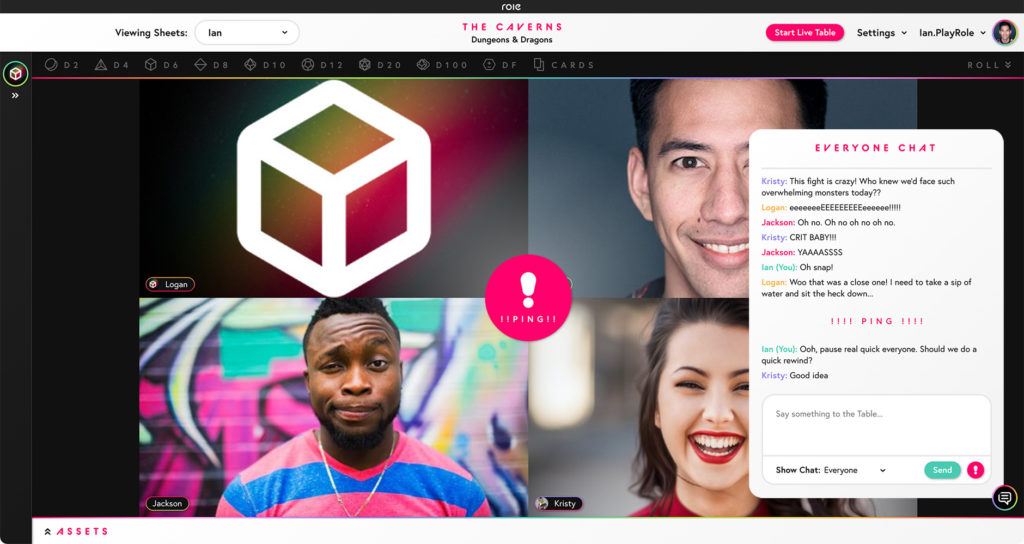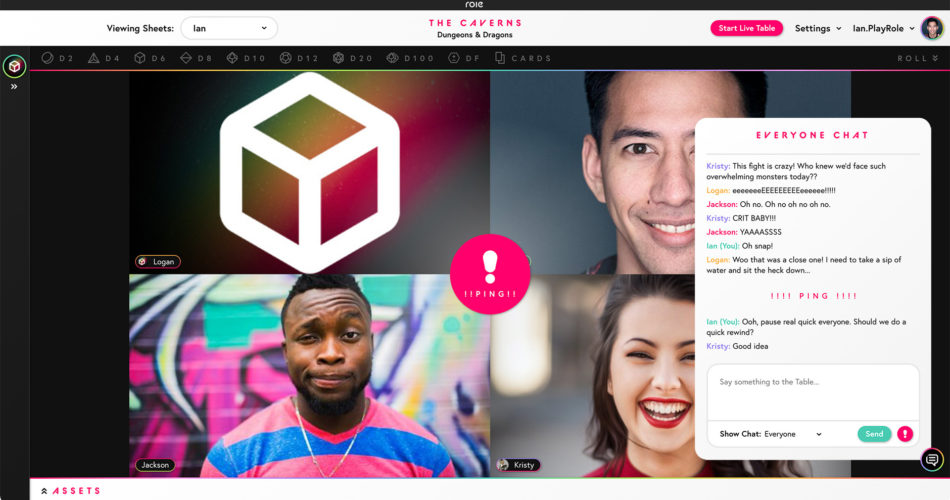Our most recent major update to Role saw the debut of one our most important and anticipated features: safety tools.
From the outset, we knew that safety tools would be a vitally important part of Role, and as our user base has continued to grow, the need to implement these tools became more urgent. Our hope is that as our users are creating, playing, and imagining on Role, they will be able to do so within a safe and supportive environment.
We developed our safety tools in partnership with Kienna Shaw and Lauren Bryant-Monk, the curators of the TTRPG Safety Toolkit. Their experience and perspectives have been invaluable throughout this process. With their help, we created 3 official safety templates that are automatically placed in everyone’s account:
Here’s a breakdown of what users can expect out of each template.
Safety/Support Tool Info Sheet
This template helps users organize information about any safety/support tool that they use at their table, and that they can use as a quick reference during play. Users can document and reference their tools and describe how to use the tool, including when to use it, how to activate it, and what happens once the tool is used. Many users may customize existing tools to fit their group, so this template allows users to track these customizations and document exactly how tools work within their group.
Lines and Veils
The concept of Lines and Veils was originally created by Ron Edwards. Typically “lines and veils” are discussed before play starts to set boundaries on content in a game. A line is a hard limit, something that players or the GM do not want to engage with in any way, even obliquely. Any content that is behind a line will not be present in the game at all. Veils are soft limits, things that are OK “behind a curtain” or when they “cut-to-black.” Setting up a veil means that the content might be in the game but not spotlighted or described in great detail. Lines and veils may also be adjusted as needed throughout the game. Our template allows users to keep easy track of the lines and veils at their table.
Stars and Wishes
The concept of Stars and Wishes was originally created by Lu Quade. Stars and Wishes is an after-play tool that can be used to gather feedback from everyone at the table. At the end of a session, everyone offers Stars (something that they loved about the game) and Wishes (something that they would like to see happen in a future session). This gives players additional insight into how their fellow players are perceiving the game and what they enjoy most about it, and will help a GM hone in on how to best excite their players. Our template includes fields broken up by session and date where players can record the Stars and Wishes that resulted from that session.
Other Tools
Aside from these 3 templates, we’ve also implemented 2 more general safety tools.
First, we’ve given more control to players to manage their own table. Table hosts have the ability to remove a player and all of their content from the table. The host can also password protect their table to make sure only the people they invite can join. They can then change this password if need be.

We have also introduced a ping system. Pings are completely anonymous, and are a quick way to let everyone at the table know that there is an issue. Pings show up on everyone’s screen, in text chat, and they also play a sound. Pings indicate to the GM and other players that the group should pause and check in with whatever safety tools they have agreed upon.
Safety will continue to remain a priority for all of us at Role, especially as our platform grows. We will listen to the changing needs of our community and respond to best serve our players. We believe these tools are a great start, but we also know that safety and support require vigilance, and more tools may be added in the future.
Thank you for your support, and remember: you can play with us.
— The Role Team <3

